How Electric Motors Work
Electric motors work on the principle of electromagnetic induction. When an electric current flows through a wire, it creates a magnetic field around the wire. In an electric motor, this principle is used to create a rotating magnetic field. This rotating magnetic field interacts with another magnetic field, typically produced by a permanent magnet, to generate a force that causes the motor to rotate.Components of an Electric Motor
Electric motors typically consist of several key components:- Stator: The stationary part of the motor that contains the coils of wire through which the electric current flows, creating the magnetic field.
- Rotor: The rotating part of the motor that is subject to the magnetic forces and experiences the rotational motion.
- Commutator (in some types of motors): A device that periodically reverses the direction of the current in the rotor windings, ensuring that the rotor continues to rotate in one direction.
- Brushes (in some types of motors): Contacts that deliver electric current to the commutator.
- Shaft: The output shaft of the motor, which translates the rotational motion into mechanical work.
Types of Electric Motors
There are several types of electric motors, each with its own unique characteristics and applications:- DC Motors: Direct current (DC) motors use a constant voltage to produce a continuous rotation. They are commonly used in applications that require precise speed control, such as in robotics and electric vehicles.
- AC Motors: Alternating current (AC) motors are powered by an alternating voltage source. They are widely used in industrial and commercial applications, such as in pumps, fans, and conveyor systems.
- Brushless DC Motors: These motors eliminate the need for brushes and commutators, resulting in improved efficiency and reduced maintenance requirements. They are commonly used in high-performance applications, such as in computer hard drives and aerospace systems.
- Three-Phase Motors: These motors are powered by three-phase AC power and are commonly used in industrial machinery and equipment due to their high efficiency and reliability.
Study Guide for Electric Motors
To study electric motors effectively, consider the following key points:- Understand the principles of electromagnetism and electromagnetic induction, including how electric current creates a magnetic field.
- Learn about the components of an electric motor, including the stator, rotor, commutator, and brushes, and how they work together to produce mechanical motion.
- Explore the different types of electric motors and their specific applications, advantages, and limitations.
- Investigate real-world examples of electric motors in use, such as in household appliances, automotive systems, and industrial machinery.
- Experiment with simple electric motor designs to gain a hands-on understanding of how they function.
◂Science Worksheets and Study Guides Sixth Grade. Birds and Mammals
Study Guide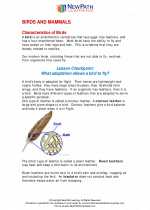 Birds and Mammals
Birds and Mammals  Activity Lesson
Activity Lesson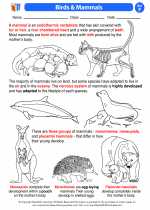 Birds & Mammals
Birds & Mammals  Worksheet/Answer key
Worksheet/Answer key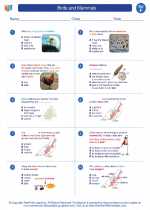 Birds and Mammals
Birds and Mammals  Worksheet/Answer key
Worksheet/Answer key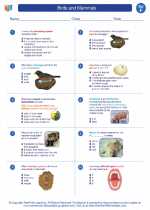 Birds and Mammals
Birds and Mammals  Worksheet/Answer key
Worksheet/Answer key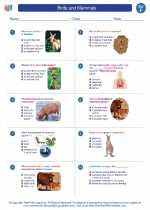 Birds and Mammals
Birds and Mammals  Worksheet/Answer key
Worksheet/Answer key Birds and Mammals
Birds and Mammals  Vocabulary/Answer key
Vocabulary/Answer key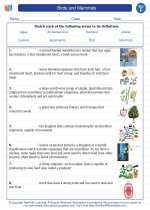 Birds and Mammals
Birds and Mammals  Vocabulary/Answer key
Vocabulary/Answer key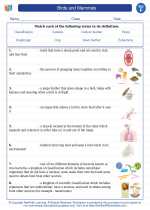 Birds and Mammals
Birds and Mammals  Vocabulary/Answer key
Vocabulary/Answer key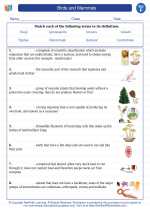 Birds and Mammals
Birds and Mammals  Vocabulary/Answer key
Vocabulary/Answer key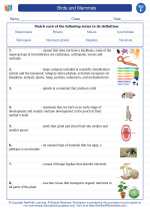 Birds and Mammals
Birds and Mammals  Vocabulary/Answer key
Vocabulary/Answer key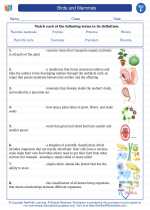 Birds and Mammals
Birds and Mammals 

 Activity Lesson
Activity Lesson
 Worksheet/Answer key
Worksheet/Answer key
 Worksheet/Answer key
Worksheet/Answer key
 Worksheet/Answer key
Worksheet/Answer key
 Worksheet/Answer key
Worksheet/Answer key
 Vocabulary/Answer key
Vocabulary/Answer key
 Vocabulary/Answer key
Vocabulary/Answer key
 Vocabulary/Answer key
Vocabulary/Answer key
 Vocabulary/Answer key
Vocabulary/Answer key
 Vocabulary/Answer key
Vocabulary/Answer key

The resources above cover the following skills:
LIFE SCIENCE
From Molecules to Organisms: Structures and Processes